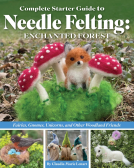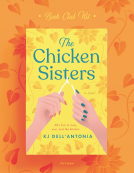
The Plants of the Appalachian Trail
A Hiker’s Guide to 398 Species
by Dr. Kristen Wickert
This title was previously available on NetGalley and is now archived.
Send NetGalley books directly to your Kindle or Kindle app
1
To read on a Kindle or Kindle app, please add kindle@netgalley.com as an approved email address to receive files in your Amazon account. Click here for step-by-step instructions.
2
Also find your Kindle email address within your Amazon account, and enter it here.
Pub Date Jun 11 2024 | Archive Date Jun 11 2024
Talking about this book? Use #ThePlantsoftheAppalachianTrail #NetGalley. More hashtag tips!
Description
Quickly find, identify, and learn about the amazing range of plants and fungi growing along the Appalachian Trail. It’s easy with this guide, organized by type, color, and trail section. With hundreds of color photos and lively, accessible descriptions, there’s so much you can learn. Keep an eye out for flame azaleas, violet coral fungi, pink lady slipper orchids, and oak trees that are hundreds of years old.
Whether you’re enjoying a day hike, exploring with your family, or setting out on the trek of a lifetime, you’ll forge a deeper connection with nature through the beautiful plants on display mile after mile.
Available Editions
| EDITION | Other Format |
| ISBN | 9781643260402 |
| PRICE | $29.99 (USD) |
| PAGES | 288 |
Available on NetGalley
Featured Reviews
 Stephanie M, Librarian
Stephanie M, Librarian
I would recommend this book to the avid botanist hiking the Appalachian Trail. I found it interesting the different ecosystems the path has along its course. Many plant and fungi species are discussed in detail. The color photographs are stunning in color quality, and provide a good specimen for the species described. I recommend this book to the Appalachian hiker or for someone interested in the flora of the trail. Great book.
 Media/Journalist 16509
Media/Journalist 16509
This is an incredibly comprehensive guide to just under 400 plants and mushrooms of the Appalachian Trail. There is a color photo, description, common name, Latin name and information about where each is found and when. There are generally two plants or mushrooms to a page, and they are grouped together by their types.
While the book is thorough, interesting and extremely informative, do note that is not a foraging guide. While some plants and mushrooms are noted to be delicious or poisonous, for the most part this is not mentioned. It could still be a quite helpful identification guide for foragers double checking what they have found, though. The main focus of the book is identifying and getting to know the plants and mushrooms of the trail, and for this the book is excellent.
I read a temporary digital copy of this book for review.
The Plants of the Appalachian Trail by Dr. Kristen Wickert is a thorough, and beautifully illustrated book. This book covers close to 400 species of plants. Including trees,herbs,shrubs, vines, fungi, lichens, etc. Each plant has a full color picture, and a complete description of habitat, and its uses. This is a long trail with various climates and topography. I found this book both beautiful and interesting. I think this book would interest a wide variety of people.
 Misti L, Reviewer
Misti L, Reviewer
Having followed the author on IG for many years now, I've come to appreciate her in-depth posts and explanations about eastern US and Appalachian species. I was delighted to see she had written this book and I think it is a much needed update to some of the older field guides out there for the AT. I especially appreciated the addition of fungi and lichens. A wonderful book to have on hand for a thru-hike, maybe in a bounce box, or for reading through on your return trip home. Or keep it handy for weekend excursions.
4 ⭐️
Perfect for its intended use, which is identifying native plant life along the Appalachian Trail (A.T.). It is lightweight for hiking mobility, and therefore understandably not super in-depth. But it’s also a great reference for those visiting or living near the respective regions that want a quick reference guide, which is why I was interested.
🌸 This guide focuses mainly on the flower, leaf, stem and fruits of various native flora, fauna and fungi, and as the author points out, it is NOT meant to be used for foraging.
🗺️ It distinguishes separate eco regions along the A.T., which stretches across 14 states, from GA to ME. Each featured plant includes a real photo, which respective sections along the A.T. it can be found, the various colors it comes in, and the times of year it would fruit.
🍄 I especially loved the tree, fern and mushroom identifiers. There some interesting plants in my region that I haven’t yet come across and am now curious to see.
💡It would be an awesome addition if this guide also offered a checklist that hikers could check off as they come across the plant, making it an engaging scavenger hunt to do along the extremely long A.T. hiking journey. Just an idea, perhaps as a free download with purchase of this guide.
Thanks to NetGalley, Timber Press, and Dr. Kristen Wickert for providing me with a complimentary ARC to review!
The Plants of the Appalachian Trail by Dr. Kristen Wickert is a guide designed for hikers along this incredible part of the world and I was utterly immersed in it all evening. It will likely be a book I refer to over and over again, not just for the different species, but for reference about the different area's of the trail
The book is really well laid out, beautifully written, engaging and full of stunning pictures and illustrations. It will appeal to a wide range of people, from the intended audience of Hikers, but also botanists, biologists and arborists (I tested it with my other who is an arborist and he was enchanted, so there's a win!)
A simply stunning book and highly recommended for anyone who loves the natural world
Thank you very much to Netgalley and especially Timber Press and Dr Kristen Wickert for this gifted ARC. My review is left voluntarily and all opinions are my own
The Plants of the Appalachian Trail is a remarkable guide to the flowers, trees, fungi, and lichen on the AT. Easy to use, in-depth descriptions, and color photos make it a must-have if you hike sections of the trail and wonder, What is that plant? You can also use it to identify plants on local trails. It's a great guide to have on hand at home to flip through and improve your knowledge of the plant world around you even when you're not hiking..
The Plants of the Appalachian Trail is a field guide to the AT and the species commonly found there curated and written by Dr. Kristen Wickert. Due out 11th June 2024 from Hachette on their Timber Press imprint, it's 288 pages and will be available in paperback and ebook formats.
Timber Press is well known for solidly usable gardening and nature tutorial guides and this is another winner. The information is logical, solid, up-to-date, and well arranged in an accessible and logical form. I don't think there's been a person on a nature walk who hasn't wondered what a particular plant was, and this book has good, accessible information for exactly that.
This book includes profiles for 398 species spread over several ecological areas and within a very broad range of species grouped into: trees, shrubs & vines, herbaceous plants, and fungi lichen & slime molds. Each short profile includes a color picture (generally in bloom, if applicable), the Latin binomial, and common name, range location along the AT, flower color, fruiting/blooming times, size, and natural habitat, along with a short background and info description.
Five stars. This is a very good field guide with lots of entries as well as ancillary information, resources for further reading, glossary, and cross referenced index. It would make an excellent choice for public or school library acquisition, home use, scouting/activity groups, and similar uses.
Disclosure: I received an ARC at no cost from the author/publisher for review purposes.
 Jennifer D, Librarian
Jennifer D, Librarian
Definitely wish this existed before I attempted my thru hike. I really enjoyed this and thought it contained a lot of great information! Will definitely be referencing this book next time I am on the trail.
Thank you to the author and publisher for the opportunity to review this book.
Readers who liked this book also liked:
Silvia Moreno-Garcia
Historical Fiction, Literary Fiction, Sci Fi & Fantasy
Robin Soans, Claudia Roden
Cooking, Food & Wine, Nonfiction (Adult), Travel


















